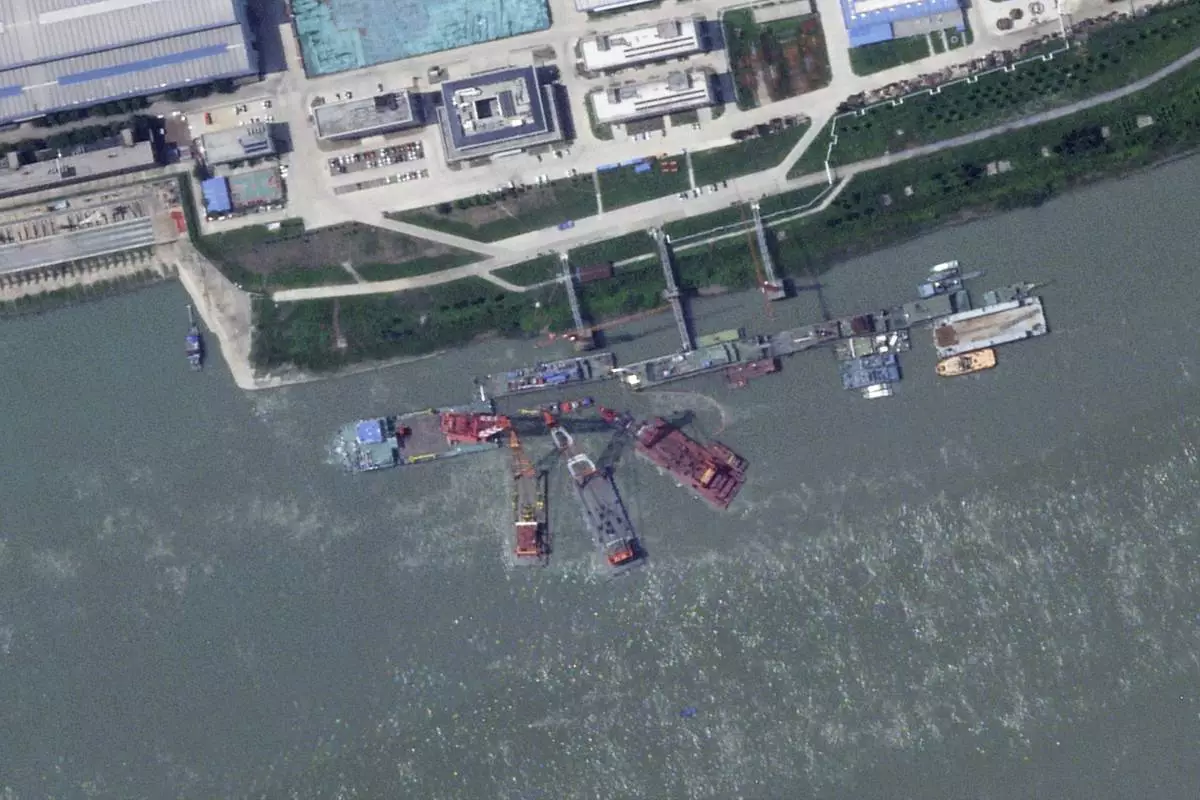QUEBEC CITY (AP) — Canadian rapper K’naan, known for the global hit “Wavin’ Flag,” has been charged over an alleged sexual assault in Quebec City dating back more than 14 years.
A charge sheet filed at the courthouse in Quebec City on Thursday says the rapper, whose given name is Keinan Abdi Warsame, is charged with one count of sexual assault from July 2010.
The arrest warrant alleges the assault took place between July 16 and July 17, 2010, dates that coincide with the musician’s appearance at Quebec City’s popular Festival d’été de Québec.
The case was before the court, but the accused wasn't present. His lawyers weren’t immediately available for comment.
The victim, whose identity is protected, was 29 at the time of the alleged assault.
The Somalia-born musician grew up in Toronto, but resides in Brooklyn, New York, according to the charge sheet.
K’naan was given the cultural impact award at Canada’s SOCAN Awards on Tuesday for the global resonance of the 2009 hit “Wavin’ Flag.”

FILE - K'naan poses in Minneapolis on Oct. 22, 2016. (AP Photo/Jeff Baenen, File)
WASHINGTON (AP) — Satellite imagery showed that China’s newest nuclear-powered attack submarine sank alongside a pier while under construction, a senior U.S. defense official said Thursday.
The sinking of China's first Zhou-class submarine represents a setback for Beijing as it continues to build out the world's largest navy. Beijing has become increasingly assertive in pursuing its claim to virtually the entire South China Sea, which is crucial to international trade.
Meanwhile, China faces longtime territorial disputes involving others in the region including Brunei, Malaysia, the Phillippines, Taiwan and Vietnam. The United States has sought to strength ties to its allies in the region and regularly sails through those waters in operations it says maintains the freedom of navigation for vessels there, angering Beijing.
The submarine likely sank between May and June, when satellite images showed cranes that would be necessary to lift it off the bottom of the river, said the official, who spoke on the condition of anonymity to provide details about the submarine loss.
China has been building up its naval fleet at a breakneck pace, and the U.S. considers China’s rise one of its main future security concerns.
The Chinese Embassy in Washington on Thursday said it was “not familiar with the situation” and it did not have information to provide.
The U.S. official said it was “not surprising” that China's navy would conceal it. The submarine's current status is unknown.
The identification of the sunken nuclear submarine was first reported by The Wall Street Journal. Thomas Shugart, a former U.S. Navy submariner and an analyst at the Center for a New American Security, first noticed the incident involving the submarine in July, though it wasn’t publicly known at the time that it involved the new Zhou-class vessel.
Satellite images from Planet Labs PBC analyzed by The Associated Press show what appears to be a submarine docked at the Shuangliu shipyard on the Yangtze River before the incident.
An image taken June 15 appears to show the submarine either fully or partially submerged just under the river’s surface, with rescue equipment and cranes surrounding it. Booms surround it to prevent any oil or other leaks from the vessel.
A satellite image taken Aug. 25 shows a submarine back at the same dock as the submerged vessel. It's not clear if it was the same one.
It remains unclear if the affected submarine had been loaded with nuclear fuel or if its reactor was operating at the time of the incident. However, there has been no reported release of radiation in the area in the time since.
China as of last year operated six nuclear-powered ballistic missile submarines, six nuclear-powered attack submarines and 48 diesel-powered attack submarines, according to a U.S. military report.
News of the submarine's sinking comes as China this week conducted a rare launch of an intercontinental ballistic missile into international waters in the Pacific Ocean. Experts say it marked the first time Beijing had conducted such a test since 1980.
Gambrell reported from Dubai, United Arab Emirates.

This satellite image from Planet Labs PBC shows what appears to be a sunken Chinese submarine at a shipyard near Wuhan, China, June 15, 2024. (Planet Labs PBC via AP)











